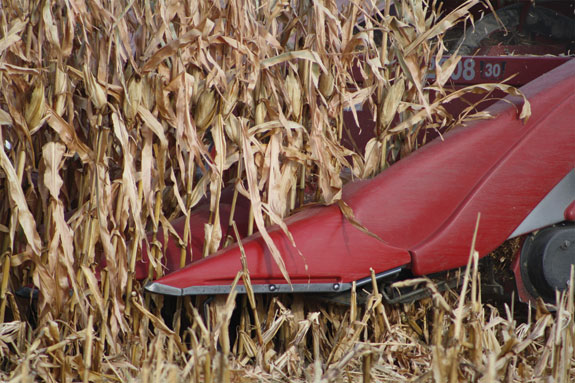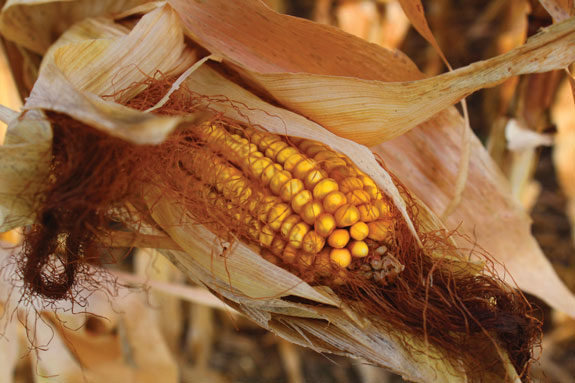In the first article of this two-part series, we discussed specific mold and mycotoxin issues derived from feedstuffs and also highlighted several symptoms directly correlated with the presence of mycotoxins in cattle.
With record-high temperatures and humidity levels this summer, we have perfect conditions for these mold spores to grow and multiply.
Many molds found in feeds are not toxic, but some varieties produce mycotoxins that can reduce our cattle’s health and productivity.
Beef cattle are exposed to mycotoxins in a variety of ways:
- Growing pasture (fungal contamination of grasses)
- Silage
- Hay and straw (including bedding)
- Hard feed formulated with contaminated grain
Economic losses associated with mycotoxicosis include:
- Slower growth rates
- Poor conception rates
- Inconsistent manure
- Increased disease susceptibility
- Reduced longevity
Ruminant diets generally include both concentrates and forages, which increases the risk of mycotoxin exposure compared with other animals that have less varied diets.
It was previously thought ruminants were not as affected by mycotoxins because of the metabolism of these toxins in the rumen. However, although some detoxification may occur, the breakdown process can also result in the production of new, more toxic metabolites, making the problems more severe.
Are you asking questions like: “How can I prevent this?” “What management practices can I implement to decrease molds in my cattle’s diets?” Here is a helpful checklist to assist in your everyday management decisions:

How to prevent mycotoxin contamination in silage
- Purchase corn and other feed varieties that are relatively more resistant to foliar, ear rot and stalk rot diseases.
- Purchase varieties that are relatively more resistant to ear- and stalk-boring insects.
- Harvest corn and haylage at the recommended maturity and moisture level for your storage system. Do not let corn stand in the field after reaching maturity or killing frost.
- Be sure chopper knives are sharp and cut at the correct length to improve packing.
- Harvest forages as quickly as possible and pack tightly with the proper weight of tractor matched to the right number of packing hours and filling rate.
- Be sure the silo is sealed to exclude oxygen. Use plastic covers secured by tires on bunkers.
- Patch any holes in plastic covers, bags or wrapped bales as soon as possible.
- Discard obviously spoiled feed or layers of feed.
- Since mycotoxins are highly soluble in water, do not allow rain to wash through upper layers of spoiled feed.
- Clean out leftover feed from feeding bunks regularly.
- Consider the use of an inoculant in silage or acid additive in high-moisture corn to enhance fermentation and control during storage.
- Match the rate of feed removal from the silo face to the size of the herd. For example, bunker silo faces should be removed at eight to 12 inches and upright silo faces at three to four inches per day. Use the higher rate during the warm seasons.
- When confronted with a toxicity problem, stop feeding the contaminated feed.
- In consultation with your veterinarian or nutritionist, consider adding an adsorbent to your feed.
“It is now more important than ever to have a documented mycotoxin control program in place as the price of feed rises, the use of alternative raw ingredients increases and the need for improved feed efficiency is paramount,” said Dr. Swamy Haladi, a technical researcher with more than 16 years of experience investigating mycotoxins.
“We know mycotoxins are going to be more prevalent in certain processed raw materials and also that mycotoxins can negatively affect health and feed efficiency, ultimately impacting profitability.”
Dr. Trevor Smith, a world-renowned scientist specializing in mycotoxin research at the University of Guelph, said he has worked on finding a number of solutions directly related to the increased problems of toxins for more than 30 years.
The first step he recommends is implementing a quality control program to monitor the toxic content and make sure the incoming supply of feedstuffs has manageable levels of contamination.
There are programs designed to identify the mycotoxin risks within a given farm or feed mill and create a plan to minimize the risks for the animal and, consequently, for consumers. If you purchase your feed from a mill, ask what strategies they use to control the potential hazard of mycotoxins.
The bottom line for producers and nutritionists is that the cow or calf remains the best indicator of a mycotoxin presence.
Therefore, if the animal is not performing to its fullest, or unexplained symptoms persist, consider reviewing the nutrient quality of your feedstuffs, the storage programs and the role a possible mycotoxin may be playing.
Click here for more information on mycotoxins and to explore mycotoxin management programs or call the Mycotoxin Hotline toll-free at 866-322-3484.
PHOTOS
TOP: Purchase corn and other feed varieties that are relatively more resistant to foliar, ear rot and stalk rot diseases.
BOTTOM: Harvest corn and haylage at the recommended maturity and moisture level for your storage system. Photos courtesy of Katlin Mulvaney.








